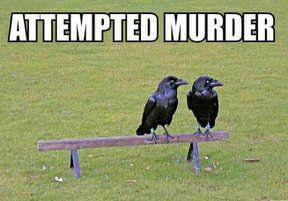Fail!
 Thank you to all who caught our mistake, now corrected, on “Yippee!”, our Math Beast problem for the week of 10/17/11. As the posted explanation revealed, both Quantities were intended to have a factorial in both numerator and denominator. However, the posted question was missing that crucial exclamation point in the numerator of Quantity B, an omission that affected the answer. The error occurred for the most mundane of reasons: fancy fractions and figures must be created separately and posted as image files, not a simple cut-and-paste. We regret that we lost the “!” during image creation, and apologize for any consternation this may have caused. Thanks for keeping us on our toes! <-- Exclamation point pun intended.
Thank you to all who caught our mistake, now corrected, on “Yippee!”, our Math Beast problem for the week of 10/17/11. As the posted explanation revealed, both Quantities were intended to have a factorial in both numerator and denominator. However, the posted question was missing that crucial exclamation point in the numerator of Quantity B, an omission that affected the answer. The error occurred for the most mundane of reasons: fancy fractions and figures must be created separately and posted as image files, not a simple cut-and-paste. We regret that we lost the “!” during image creation, and apologize for any consternation this may have caused. Thanks for keeping us on our toes! <-- Exclamation point pun intended.
The Math Beast’s Challenge Problem of the Week – October 24th
.png) Each week, we post a new Challenge Problem for you to attempt. If you submit the correct answer, you will be entered into that week’s drawing for two free Manhattan Prep GRE Strategy Guides.
Each week, we post a new Challenge Problem for you to attempt. If you submit the correct answer, you will be entered into that week’s drawing for two free Manhattan Prep GRE Strategy Guides.
This week’s question is below. Get out their scrap paper and start solving!
{8, 10, 11, 16, 20, 22, 25, x}
In the set above, x is an odd integer between 13 and 21, inclusive. Each possible x value is equally probable.
Which of the following statements has the highest probability of being true?
Check Out Our Free GRE® App
 Ever wish there was a more convenient way to take advantage of your morning train ride or doctor’s office waiting room session to get that nagging GRE® study out of the way? If you answered a resounding “yes!” to that question, then your wish has been granted. Read more
Ever wish there was a more convenient way to take advantage of your morning train ride or doctor’s office waiting room session to get that nagging GRE® study out of the way? If you answered a resounding “yes!” to that question, then your wish has been granted. Read more
A Murder of Crows
This image — hilarious to those with formidable lexicons — has been making its way around the Internet lately:

Of course, this is only funny if you 1) recognize what crows look like, and 2) know that a murder is a group of crows.
Really? Yep! Just as you would say “a pack of dogs,” many other animals also have unique collective names:
Covey of partridges
Ostentation of peacocks
Charm of hummingbirds
Float of crocodiles
Here is a list of many more.
Most of these are rather silly, but a few contain good GRE words:
Horde of hamsters
Drove of hares
Aerie of hawks
Passel of possum
Coterie of prairie dogs
Bevy of quail
Rout of wolves
A horde is “a large group, multitude, number, etc.; a mass or crowd,” or “a tribe or troop of Asian nomads” or “any nomadic group.” Genghis Khan’s grandson Batu famouly led the Golden Horde.
A drove can be a number of oxen, sheep, or swine driven, but in the plural, droves, refers to a large crowd of people, especially in motion.
An aerie the nest of a bird of prey, as an eagle or a hawk, or “a house, fortress, or the like, located high on a hill or mountain.” Here is a previous post about the word aerie, which is also the name of a lingerie store.
A passel is “a group or lot of indeterminate number.” In other words, “a bunch,” as in, “I’ve got a bunch of towels here,” or “There’s a passel of condiments on the table.”
A coterie is “a group of people who associate closely” or “an exclusive group; clique.” Prairie dogs are probably called a coterie because they live in communal burrows.
A bevy is a large group or collection. From 500 Advanced Words, 1st Edition: Manhattan GRE Vocabulary Flash Cards:
Usage: The bar owner cringed when a bevy of women in ridiculous tiaras came in “ Another drunken bachelorette party, he sighed.
More Info: Bevy is most commonly associated with birds, and often used to describe groups of people who stick together like a flock of birds “ it usually implies a not-very-serious opinion about the group in question.
A rout is “a defeat attended with disorderly flight” or any overwhelming defeat. You can also use it as a verb, as in “to rout an army.” Why is it a rout of wolves? Well, a rout of wolves could certainly rout you.
And that brings us back to the murder of crows. Attempted murder! Nerd joke!